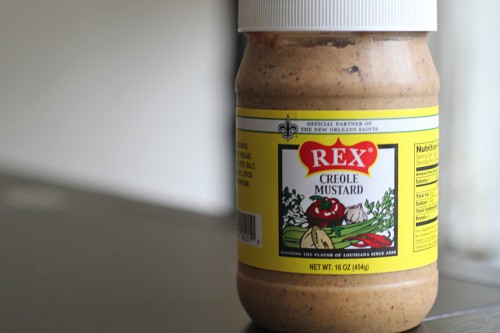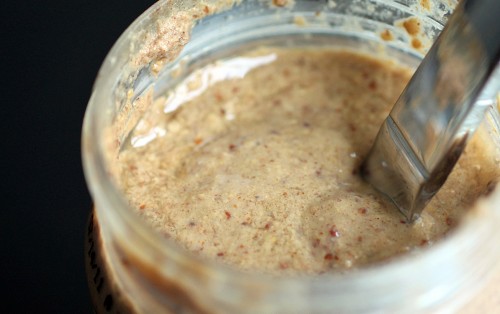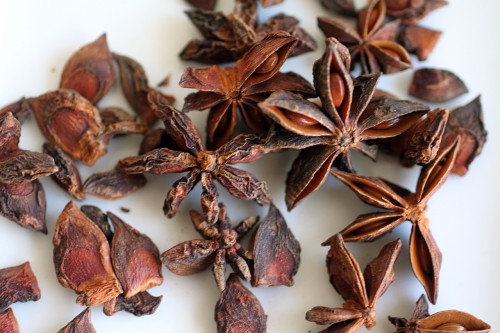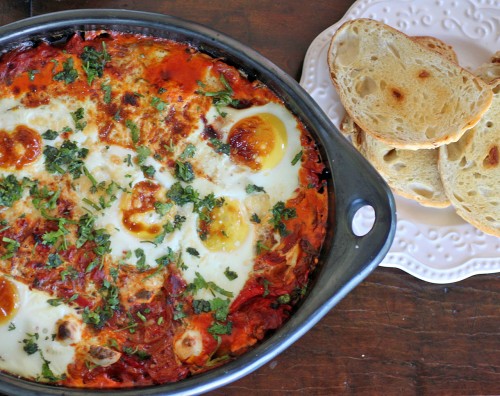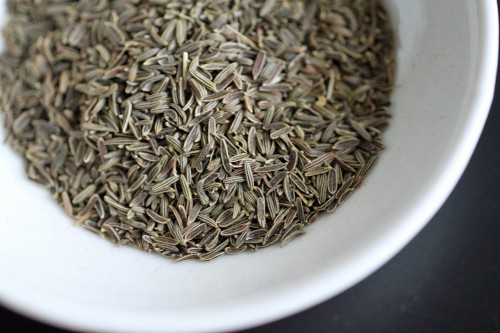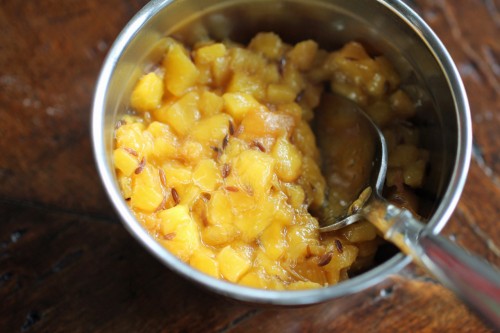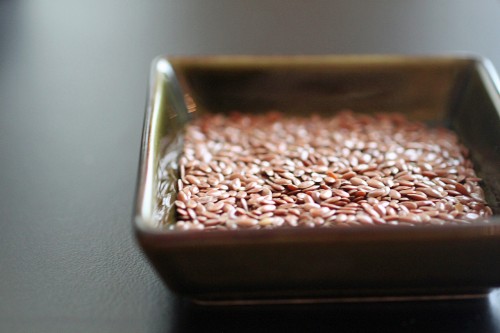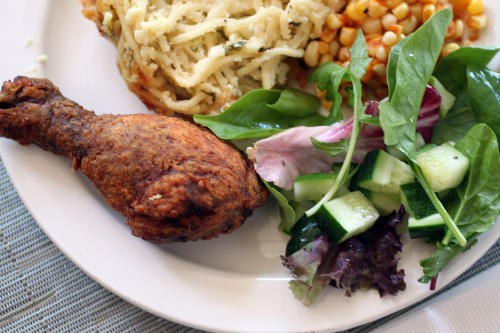Shrimp and Grits
This weekend, I taught a class with the De Gustibus cooking school over at Junoon. I had a blast (!) chatting about spices in our spice room and walking the students through a traditional South Indian curry – which they made by themselves to rave reviews! In any case, one of the students asked me about vadouvan, a mix I wrote about months back and in what dishes I might use it. It put the bug in my brain, and this French-Indian spice blend became my seasoning du jour for some exotic shrimp and grits I whipped up for Sunday brunch.
Now, I’m honestly in favor of blending your own curry powder from spices you have on hand, tailoring to your palate. But vadouvan is a fantastic blend to keep on hand. It has a softer approach to curry, with ingredients like dried shallots, bay leaves and even fennel seeds blended in. There is a warm sweetness to it that I think complements shrimp tremendously, and when you use a bit of butter to cook the shrimp, the pan drippings become a beautiful, fragrant golden sauce.
I know bacon or smoked sausage is traditional in shrimp and grits (not that tradition is reigning here anyway…), but the friend I cooked for is not big on pork. For that reason, I used some grated smoked mozzarella to infuse the creamy grits with that signature smokiness. Using milk and chicken stock give the grits a silkiness and rich flavor. The shrimp need little else besides the vadouvan and a bit of salt, but the shallots and minced jalapeno are great here. Finishing with fresh herbs brings in brightness, and this dish has so much body it could easily be a (super) easy weeknight dinner. The curry notes, sweet shrimp and creamy smoky grits…heavenly. Enjoy!
Ingredients
Serves 4
2 cups milk
2 cups chicken stock
salt & freshly ground black pepper
1 cup stone ground grits
5 tbsps unsalted butter
1 ½ cups smoked mozzarella, grated
1 lb shrimp, peeled and deveined
3 ½ tsps vadouvan
1 tbsp olive oil
1 shallot, minced
1 jalapeno, seeded, deveined and minced
Chopped scallions and parsley / cilantro (for garnish)
Procedure
In a saucepan, bring milk and chicken stock up to a boil. Lower to a simmer, season with salt and pepper, and whisk in grits. Cover and cook at a low simmer for 25 to 30 minutes. Remove from the heat and add in 3 tablespoons of the butter and the smoked mozzarella, whisking to incorporate fully. Keep covered and warm.
Make sure the shrimp are dry and toss with vadouvan and some salt. Heat a skillet over medium-high heat. Add 2 tablespoons of butter and 1 of olive oil. Add shrimp and cook for a minute or so. Flip shrimp, lower heat to medium-low and add in the shallots and jalapeno, tossing to combine. Cook for another 2 minutes.
Serve grits hot and spoon shrimp mixture on top, letting some of the pan juices drip on to the grits. Garnish with some chopped scallions and parsley or cilantro.




